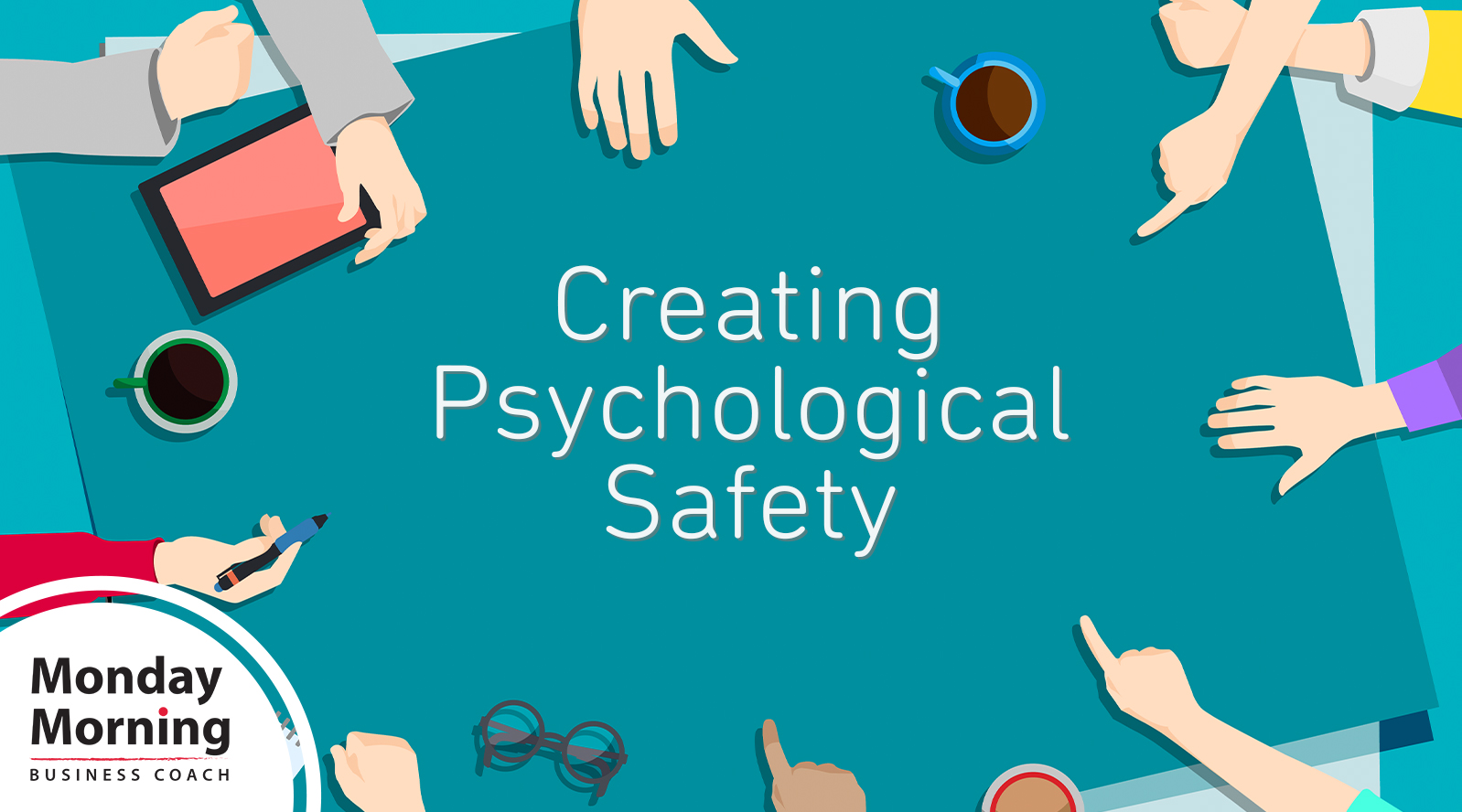In our recent post, Psychological Safety, we talked about a concept that’s been around for some time and is getting greater attention these days. It’s the concept of creating a psychologically safe environment for the success of teams, departments, and organizations as a whole.
If you recall, Amy Edmonson’s definition of psychological safety (in the 1999 Administrative Science Quarterly) was “a belief that one will not be punished or humiliated for speaking up with ideas, questions, concerns, or mistakes, and that the team is safe for interpersonal risk-taking.”
This week, we’re talking about some ways you can create psychological safety in your world, team, or organization:
Attack the problem, not the person!
- One of the most powerful shifts you can make is to think of yourself as standing shoulder-to-shoulder with your team and looking at the problem you must resolve together, rather than seeing them as the problem.
- This simple shift does two things.
- It forces you to consider and name the real problem vs. the feelings associated with the problem.
- It opens you up to look for ways that you can solve it together.
Honor that humans are messy. You, too, are messy.
- Remind yourself that all of us need respect to demonstrate our competence.
- We want to feel our contributions are valued and to have influence and impact over things that we’re doing day-to-day.
- We all come with our own hopes, fears, and vulnerabilities. Sometimes, these can get in our way—despite the best of intentions. Assume messy is just that.
Respect that our brains need predictability to be most effective.
- Remember that the major focus of our brain is to keep us alive.
- While you may know that there are no longer lions in the bushes, your brain can experience change as a threat. This increases your ability to see what’s wrong and decreases your ability to think clearly and innovatively.
Vulnerable trust is the ground on which great work is built.
- Vulnerable trust is the key to psychological safety.
- It’s not simply that you trust your colleagues to show up at a meeting or get a piece of work done.
- It’s a deeper trust that you can be open and vulnerable about the challenges of work, the mistakes you’ve made, and your additional stresses at home (especially during COVID) which makes it difficult to be fully present with work.
To support you with some additional suggestions, here’s a link to a recent Psychology Today article called Redefining and Reinforcing Psychological Safety.
This week, spend some time thinking about how you can create a culture of psychological safety. What would you need to do as a leader or a team member to contribute to a foundation of trust and safety?
We’re here for you.
If you’d like support in creating
Psychological Safety within your organization
or team, contact us today about
our coaching services.


